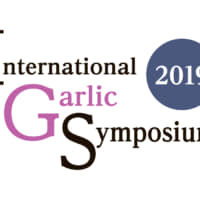It is universally accepted that to maintain healthy teeth, regular cleaning should do the trick.
However, recent research has revealed an unexpected newcomer to the dental health care scene that has nothing to do with fluoride or flossing — garlic.
Scientists at Jerusalem’s Hebrew University’s Hadassah School of Dental Medicine found that the pungent-tasting bulb, more commonly associated with cooking, holds a potential key to treating unhealthy teeth.
The study demonstrated that the common gum disease gingivitis could be effectively treated through the daily consumption of aged garlic extract, or AGE.
The results of their trial, published in the Journal of Clinical Dentistry last year, were presented for the first time during this year’s International Garlic Symposium (IGS) in late May in Hiroshima — the first time Japan hosted the three-day event.
It brought together some 200 delegates from around the globe, among them scientists who presented research into the benefits of garlic. These benefits were most commonly in the form of AGE, which is made by aging and extracting compounds from garlic that has been aged for 20 months in ethanol.
At the conference, presentations covered studies on the health benefits of garlic in a range of fields, from liver injuries, cardiovascular diseases and memory to dental and pet care.
While scientific research on the health benefits of garlic is relatively new, the use of garlic as an herbal medicine goes back at least 5,000 years.
Native to the area that is today known as Kyrgyzstan, civilizations around the world have used garlic to mitigate a myriad of ailments. These range from snake bites and intestinal parasites to skin diseases and muscle inflammation, according to Mark Blumenthal, founder and executive director of the American Botanical Council.

Perhaps of interest to the team in Israel was the use of garlic more than 1,200 years ago by the Assyrians to treat rotten teeth, but according to lead researcher Jonathan Mann, the idea that garlic could return such impressive results was beyond his imagination.
“I even have a friend who goes to garlic before dental care. … Nevertheless, I couldn’t imagine that even this first study would be such a great success,” said Mann, whose research includes studies covering dental needs for people with disabilities and autism as well as the elderly.
The study took 151 healthy subjects with mild to moderate gingivitis and multiple bleeding sites and randomly split them into two groups — one that was administered AGE, and one that received placebos.
Over four months, those given AGE showed considerable reduction of gingival inflammation and bleeding, while the others’ conditions remained unchanged, according to Mann; his study was funded by Japan’s Wakunaga Pharmaceutical Co., which markets products such as AGE-based supplements.
Inspired by these results, Mann and his colleagues have commenced a new study looking at the effect of AGE on periodontitis — a more severe gum disease that can result in bone degradation and tooth loss.

Yet, according to Matthew Budoff, a professor of medicine at the David Geffen School of Medicine at UCLA, the anti-inflammatory properties of garlic can be seen across the board when it comes to clinical research using AGE.
Gum diseases, which are thought by some to increase the risk of strokes and other cardiovascular events, increase the body’s burden of inflammation, the overall suppression of which has become a major focus of research in recent years, Budoff said, adding that AGE is seen by some as key to achieving that goal.
Throughout Budoff’s own research into the cardiovascular benefits of garlic, AGE has been shown to be a “potent” anti-inflammatory property.
“One of the benefits we believe the statin (drugs) impart that have the most evidence for reducing cardiovascular death and cardiovascular risk is also a potent anti-inflammatory (benefit),” said Budoff, who is also program director at the Harbor-UCLA Medical Center’s division of cardiology. “Now we’re seeing AGE having a similar effect on inflammation.”
Over the past 15 years, Budoff’s research has shown that AGE has a wide range of implications for heart disease-related issues.
According to Budoff, firstly, AGE supplements used together with statins have been shown to decrease “bad” cholesterol while increasing “good” cholesterol; AGE supplements are also said to lower homocysteine — high levels of which have been linked to early development of heart disease.
The mechanism by which this occurs differs from statins. By comparison, AGE supplements, combined with statins, are more effective in regards to low-density lipoproteins (“bad” cholesterol).
Another study published in the Journal of Nutrition in 2016 showed that AGE “robustly” reduces blood pressure by as much as 16 millimeters of mercury — about the same as antihypertensive drugs, Budoff said. Additionally, a 2017 study demonstrated AGE reduced the progression of coronary atherosclerosis, a buildup of plaque inside the artery walls that can cause coronary artery disease.

Karin Ried, director of research at the National Institute of Integrative Medicine in Australia, has drawn similar conclusions through her studies into the effects of garlic extract on cardiovascular health in hypertensives.
Speaking about her study on the effects of AGE on gut microbiota, inflammation, and cardiovascular markers in hypertensives that was first published in Frontiers in Nutrition last December, Ried said the mean blood pressure of participants who were administered AGE during her trial was “significantly reduced.”
Interestingly, garlic has also been shown to benefit some pets.
Research at Kagoshima University’s department of veterinary medicine into the efficacy of AGE in dogs produced some surprising results.

Osamu Yamato, a professor at Kagoshima University’s laboratory of clinical pathology, explained that usually, garlic is toxic to dogs and has caused both canine and feline deaths; even consuming small amounts of food containing garlic resulted in diagnosis of Heinz body anemia in the animals before they passed.
The extraction of fresh garlic over a long period, however, produces the less irritative, and odorless, AGE, which Yamato said contains unique and beneficial compounds that can help prevent various types of diseases.
Yamato’s studies have shown that in fact AGE is not only safe for dogs to consume, but also beneficial to their health; it may act as a preventative for multiple issues inlcuding high blood pressure, hardening of the arteries and even dementia. This has even inspired a Wakunaga AGE-based supplement for dogs.
The life expectancy of dogs, like humans, has increased over the past few decades. “As a result, there has been an increased awareness of the concept of healthy life expectancy for pet dogs, as well as humans,” he said. “Our research shows that AGE can contribute to the well-being not just of humans, but dogs as well.”










